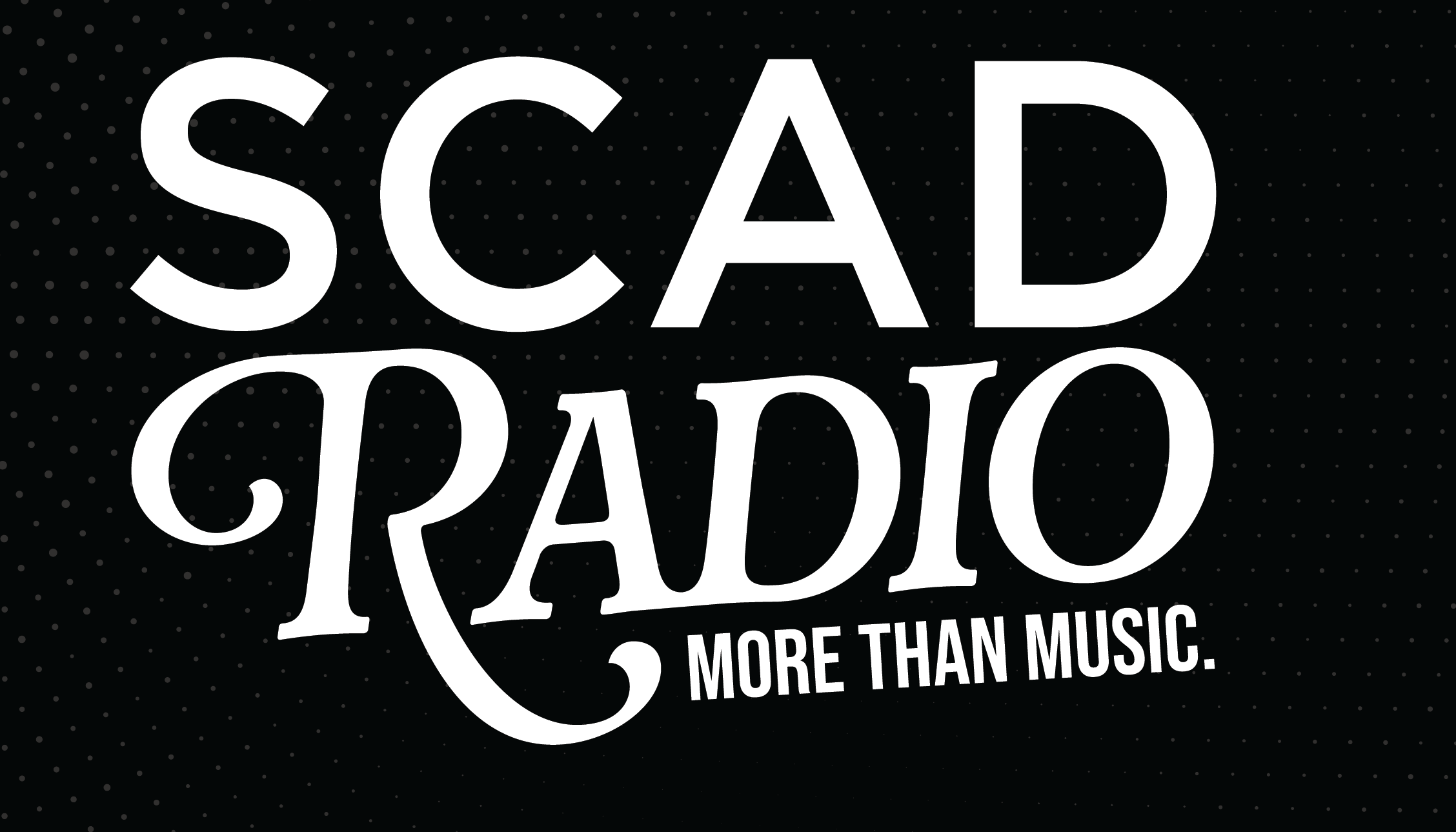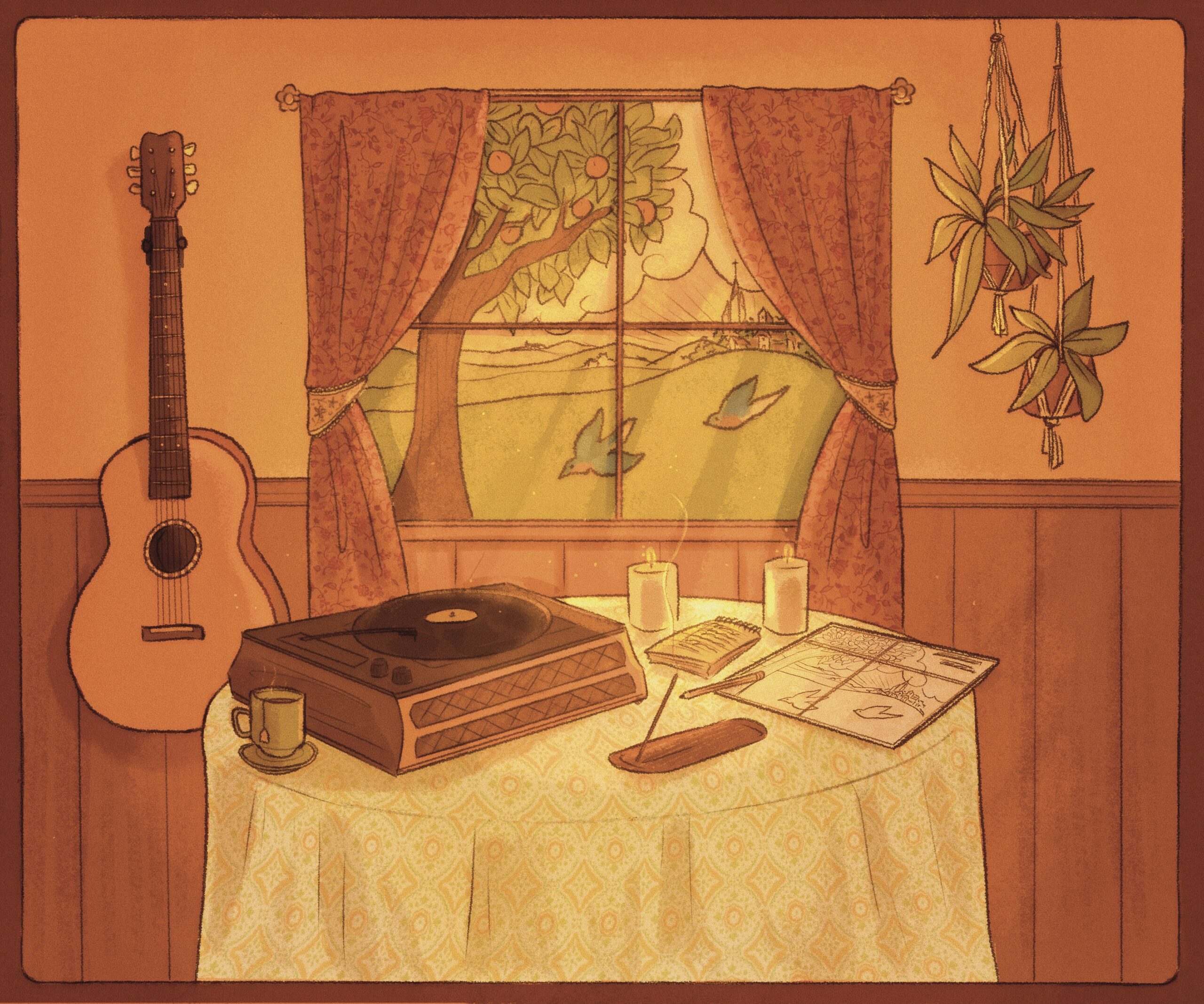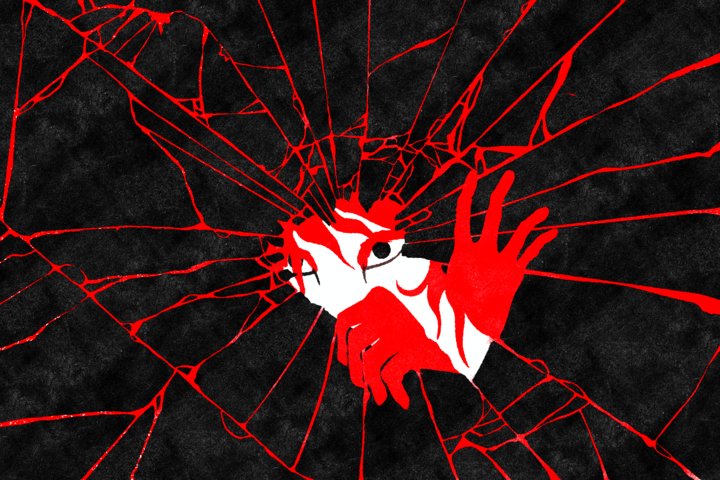Written by Eleanor Taylor. Article header also courtesy of Eleanor Taylor (pomegran.art on instagram)
Surely a genre with a name as chipper and charming as “sunshine pop” should sound just as bright as its title, right? Surprisingly, it’s a bit more gloomy than you might expect. While there are plenty of songs about looking up at rainbows with flowers in your hair, there are just as many, if not more, that seep with sadness. Stemming from an utterly wild intersection of influences, sunshine pop fuses elements of popular music of the mid 1960s (from bubblegum to baroque) with folk and samba. These inspirations laid out a distinct palette of instrumentation for artists to work with: trusty rock guitars, Brazilian percussion, the full symphonic artillery, and of course, the beloved harpsichord. Production-wise, these songs were elaborate and thick, yet experimental and flowy, almost as if you’d plopped in the Brill Building in California. The result is a unique sound profile that was incredibly responsive to the explosive shifts of the swinging 60s. Thematically, songs of the sunshine pop persuasion tend to encourage introspection and seeing the beauty in every day, but the cultural turmoil that surrounded and influenced their creation also caused many of the songs to have a palpable anxiety and melancholy in their lyrics. It’s an intriguing balance of escapism and gratefulness, nostalgia and hopefulness, existentialism and acceptance. Pioneers of the genre include The Association, The Turtles, Sagittarius, and–the topic of this article–The Millenium. Here’s where we Begin.
With a stately, pastoral introduction, “There Is Nothing More To Say” blooms, beautifully complex, throughout its two-and-a-half minute lifespan. Glimmering guitars and bells are the first raindrops to fall from the cumulonimbus of an opening chord, and before long, the song is a downpour. The bass line trails beneath thick layers of guitars that warp and warble. In true sunshine pop fashion, the harpsichord twinkles throughout. Haunting harmonies that echo as they ooh and ahh swirl like ghosts around the main melody. Lush and heavy, the song’s eerie timbre and texture is utterly mesmerizing, and strangely comforting. Though “There Is Nothing More To Say” is dense, it’s far from dark. There’s a gentleness that lives in it: the sunshine that peeks through the rainclouds.
In order to be fully understood, this song requires context. “There is something that you hear in so many of our songs, but it’s something that we want you to know,” goes the chorus. Meaning, the message of this song is scattered in the other tracks of the album it lives on: Begin. So, to comprehend exactly what The Millenium wants us to know, it’s into their (rather limited) discography we must dive.
The lyrics of “There Is Nothing More To Say” are entirely self-referential and nothing short of cryptic. They almost read like an incantation. “Oh, if you will listen I will sing in your ear of some words that perhaps will sound strange, don’t you mind.” The secret message The Millenium try to convey isn’t in this song, this is only just the instruction manual to find it. What follows the first line is a treasure map that winds throughout the other tracks on Begin, follow it.
“And if you will listen then I know you will hear what I say when I speak of the change you will find.” Begin reflects the sunshine pop genre’s reactivity to the turbulent 60s with its running theme of changes. This line leads us to “It Won’t Always Be The Same,” (a song that wasn’t originally a part of the 1968 track listing), which is about accepting the changes of life and being free of anger. Congratulations, you’ve found the first message The Millenium hid for you, keep going. There’s more on the subject of changes in the much heavier song “The Know It All”, about the danger of bringing about change. Heed the warning, and continue. The twangy track “Some Sunny Day” describes the sweet, simple changes and encourages you to look forward to a life of love that will find you under the sunshine. Feel it in your heart, and move on.
“Oh the time is gonna come when we’re gonna lead the way. We’ll be shown the way, and shown the time,” This place it seems they might be leading to just so happens to be an island. It’s hinted at first in “I’m With You”, which conveys contentment for one’s current situation while knowing that there’s still goodness ahead. “And I don’t have to chase after a dream of love,” it says, “I’ll find it on some island in time.” And you will, as the next track takes you directly to it. Aptly titled “The Island”, this song contains the key to the central theme of the album, as well as a philosophy of sunshine pop as a whole. The aforementioned island calls you to it, and, just like the singer of “There Is Nothing More To Say”, it has a message for you: treasure buried in its sand. The idyllic island tells you, “it’s time to free yourself and start to live instead of thinking about dying.” This is one of the most poignant lyrics on the album, presented in a recurring motif of a perfect world. “We only need to go.”
“Oh, if you will listen you will see what I mean as you watch all the ways of the world that we’re in.” Another cornerstone of sunshine pop is recognizing the beauty in every day. Observe and be in awe of it as you listen to the songs “5 A.M.”, which describes the serenity of the sunrise, and “To Claudia On Thursday”, which advises you to admire the world around you and let your heart fill with love for it. “And if you will listen, when you know what you’ve seen, you will watch and be ready when it’s time to begin.” There are even more messages to be found in the other wonderful songs on Begin, and its bonus track “Just About The Same” encourages you to keep looking for them, to keep listening; “Now that you think that the end is worth knowing, back to the start is where you wanna go.” You’ll be able to get lost in the trail of this marvelous album again and again.
Now, you know the secret of The Millenium, this song and its messages are yours. There is nothing more to say.





